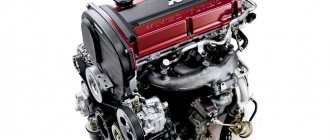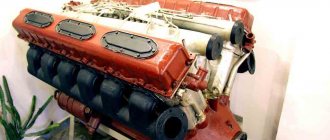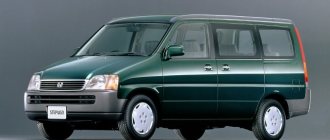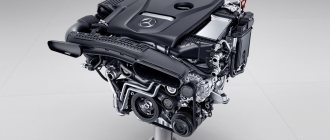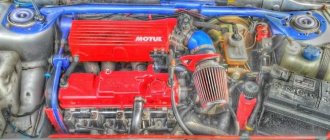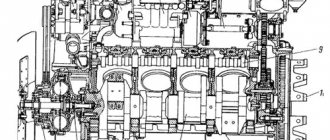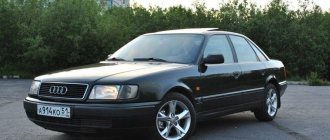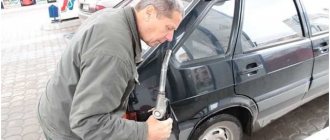International industrial company Honda Motor Co. Ltd (1946) is known throughout the world as one of the largest manufacturers of motorcycle and automotive equipment. A small company, having started its activities with the production of simple mopeds, over the years of its existence has turned into a huge international company, which includes more than 450 subsidiaries and branches. In the range of products, a special place is occupied by Honda automobile engines of the B, D, F, H, J, K, L, R, as well as ZC series.
All Honda engines, according to experts, differ from power units of other manufacturers in creative technical solutions, among which the following stand out:
- Rotation of the engine crankshaft counterclockwise (except for engines of the K, L and R series).
- Equipping the engines with a system of dynamic variable valve timing VTEC (the company’s own development of engineers).
- High reliability of the power unit at high (more than 5000 rpm) speeds.
- Ability to work for a long time in extreme conditions of “oil starvation” and with a minimum amount of coolant.
Specifications
One of the most successful developments of the Honda company is the D series engines, which were mass-produced from 1984 to 2006. Honda D series engines are power units with a cylinder displacement of 1.2 to 1.7 liters.
They were installed on Honda Civic, Honda Fit, Honda SRV and others. Engine power ranged from 62 to 130 hp. With. They were equipped with a gas distribution mechanism (GRM) with an overhead arrangement of both one (SOHC) and two (DONC) camshafts. A VTEC system was also installed on the intake valves.
The D15B power unit is the long-lived engine of the series. This legendary motor was produced in a large number of modifications (B1...B8) and had the technical parameters given in the table:
| PARAMETER | MEANING |
| Cylinder displacement, cubic meters cm | 1493 |
| Rated power, l. With. (at 5500…7000 rpm) | 71…130 |
| Max torque, Nm (at 3500…5200 rpm) | 99…138 |
| Number of cylinders | 4 |
| Number of valves per cylinder, pcs. | 42462 |
| Total number of valves, pcs. | 42583 |
| Cylinder diameter, mm | 75 |
| Piston stroke, mm | 84.5 |
| Supply system | carburetor/injector |
| Fuel | Unleaded gasoline AI-92/95 |
| Fuel consumption, l/100 km (city/highway) | 7,7/5,2 |
| Lubrication system | Combined (spraying + under pressure) |
| Engine oil type | 0W-20, 5W-30 |
| Engine oil quantity, l | 3.3 |
| Cooling system | Liquid, closed type |
| Coolant | Based on ethylene glycol |
| Motor resource, thousand hours. (theory/practice) | 150/300 |
The engine was installed on Honda Civic, Honda City, Honda Fit, Honda Capa, Honda SRV, Honda Concerto and others.
About Honda
In 1938, a young Japanese entrepreneur, Soichiro Honda, launched the production of piston rings. The company had small capacities and was based in the founder's garage. In 1940, Soichiro Honda received an order from the large automobile concern Toyota. To fulfill the order, it was necessary to rebuild the plant and move on to serious production. Subsequently, Soichiro sold this plant to his customer, the Toyota concern.
In 1946, entrepreneur Honda began producing motorcycles. At the same time, he founded a large development division, which later moved to the Honda Technical Research Institute.
Until 1967, Honda produced only motorcycles. They have occupied a serious niche in this industry. In 1967, the production of motorcycles was joined by the production of cars. Honda's first car model was the Honda T360 pickup truck. A little later, the concern’s sports car, the Honda S500, appeared on world automobile markets. For the next decades, Honda produced only motorcycles and cars.
In 2004, Honda received a license to manufacture jet engines. This direction was taken up by the concern's subsidiary, Honda Aero.
In 2006, the Honda concern founded another subsidiary. It was the design company Honda Soltec. The engineers of this company were developing photovoltaic cells. For some time the company was a leader, but then began to lose to its rivals. As a result, the company was liquidated.
Honda and its subsidiaries produce motorcycles, cars, boat engines, business jets, generators, snow removal equipment, and lawn mowers. Plus, Honda provides financial services to legal entities.
Honda factories are located in Japan, Canada, Great Britain, China, Turkey, USA, Mexico, India, Malaysia, Thailand, Indonesia, Vietnam, Brazil and Argentina.
Description
The Honda D15B engine is a 1.5-liter version of the D series. The power unit is based on an aluminum cylinder block with pressed-in cast iron liners.
Its first modifications were carburetor (D15B, D15B3, D15B4), then injection (D15B, D15B1, D15B2, D15B6, D15B7, D15B8). Some modifications were equipped with a system of dynamic variable valve timing VTEC (D15B VTEC, D15B5).
The timing belt is driven by a belt drive. The timing belt must be replaced after 100 thousand kilometers. In this case, if it breaks, the valves fail (the valves bend).
There are no hydraulic valve compensators, so the valves are adjusted after every 40,000 km.
High reliability of Honda D15B engines is ensured by observing scheduled maintenance periods. The engine oil is changed after 7-8 thousand kilometers. At the same time, regardless of what kind of oil is poured into the engine, service station specialists recommend reducing its replacement interval to 5,000 km. This is due to the chemical aging process of motor oil, which becomes clogged during operation and becomes unsuitable for use.
In addition, after 15,000 km of travel, irreversible changes occur in any oil, even the highest quality. When changing the oil in Honda engines, the oil filter is also changed at the same time.
IMPORTANT! When carrying out routine maintenance, it is necessary to remember that they are forced power units operating in more severe conditions than their counterparts. Therefore, the question is: “What kind of oil should I pour into the engine?” is of paramount importance. The main requirement is that the motor oil must be of high quality and, preferably, from a reputable manufacturer.
Transmission
Common problems
Cars are always front-wheel drive. The total service life of CV joint covers is about 150 thousand, and it is better not to delay replacing them, they do not tear, but they sweat through microcracks. And pay attention to the corrosion of the drive shaft: under the damper it is prone to corrosion, and sometimes breaks off. Moreover, the shafts of the ninth generation are even more lightweight than those of the eighth, where this problem also existed.
Mechanical boxes
Finding a car with a manual transmission is possible, but difficult. The reliability of the 6-speed manual transmission does not cause any complaints, although occasionally you come across cars with overheated clutches and dead synchronizers. But this occurs only among “racers”, and, as a rule, the half-dead box comes with a Chinese body kit, stickers and non-standard wheels with rubber-insulating tape.
The clutch life under normal operating conditions is quite high, and the cost of replacement is low, fortunately the design is completely classic, with an external release bearing. But failures of the flywheel ring gear, a conditionally “eternal” part, with mileages of up to 150 thousand, are an obvious design miscalculation. If there are any extraneous sounds when the engine starts, inspect the ring gear on the lift. There are only a few cases of breakdowns, but the reason for this is the ridiculous number of cars with manual transmissions of this generation on sale.
Automatic boxes
There is essentially only one automatic transmission here, although in several versions. This is the latest generation of Honda shaft five-speeds. Its advantages include phenomenal reliability, indifference to driving style and good gear ratios.
The disadvantages are also well known. Don't expect any dynamics; the gearbox is very, very thoughtful and resists active driving in every possible way. But fuel consumption is almost lower than with a manual transmission. These boxes are described in detail in a separate large article, but here I will only mention the main points.
The box is assembled mainly on rolling bearings, has a very low operating pressure, a reliable oil pump and a kinematic diagram with independent gears. As a result, breakdowns are extremely rare - you can break something mechanically only by unsuccessfully rocking the car or by a frankly disregardful attitude. After all, even without an oil change, the gearbox sometimes runs 200 thousand without problems. And the practice of using automatic transmissions of related SPCA/MPMA series on the previous generation Civic allows us to hope for 350 thousand or more trouble-free mileage with minimal maintenance.
Failures of solenoids do happen, but the design of the box allows you to change most of the elements without disassembling the automatic transmission, so these are really minor troubles. It’s a pity, wear of the gas turbine engine blocking linings may require removing the box and restoring the “donut” with mileages of about 200 thousand, but this happens mainly among those who still think that the Civic is a “sports” car.
Hybrids that are extremely rare among us have a variator installed. In general, the design is quite successful, approximately the same as on the Jazz/Fit, but the peculiarities of the transmission cause early wear of the belt and cones, especially the box does not like long trips at high speed on the highway.
If the electrical part is in good working order and the belt is replaced in time with a reinforced one, the design will work for a long time. But which owner will change an expensive belt on time (that is, in advance, before visible problems arise)? So it turns out that with a mileage of 150-200 thousand kilometers, the chances of the unit breaking down are very high. For example, now in countries where it makes sense to import used cars from the USA, for example, in Ukraine, cars with transmission breakdowns are being transported.
| Detail | Original price | Non-original price | Non-original price 2 |
| Suspension and transmission | |||
| Front lower A-shaped lever | 12 904 | CTR 3 779 | Masuma 4 786 |
| Front silent block of the front arm | 1 499 | Febest 693 | Moog 1 418 |
| Spherical bearing | 5 469 | Delphi 3 499 | CTR 1 154 |
| Front wheel bearing | 6 075 | F.A.G. 2 955 | SKF 3 152 |
| Front shock absorber | 12 503 | KYB 8 693 | Monroe 10 575 |
| Rack support | 2 561 | SAT 849 | Masuma 1 863 |
Motors
Gasoline engines
The main engine here is the familiar R18A from the previous generation Civic. More precisely, the R18A1 version was used for sedans for the USA, and the R18A2 for hatchbacks and station wagons for Europe. During the 2014 restyling, the engines were lightened and updated to comply with new environmental standards. Updated indices – R18Z1 and R18Z4.
The set of difficulties for the motors is exactly the same and does not depend on the version and year of manufacture. In addition to the above-mentioned difficulties with the engine suspension and various pipes, it is necessary to note the need for frequent valve adjustment, at least once every 50 thousand mileage (otherwise the camshafts are killed, especially with low-viscosity oil), weak exhaust and catalyst, difficulties with oil leaks from the solenoids and very low speeds idle speed, which is why the engine does not heat up at idle and vibrates strongly.
The plastic lower engine mount and thin cooling system pipes are some of the main irritants for owners. At the same time, the cost of original components is very high, and the service life of substitutes is usually very short. As a result, the lower support is frankly “collectively farmed” from whatever is possible, and the tubes they select are not original.
After 100 thousand miles, the crankcase ventilation system becomes thoroughly clogged, and the engine begins to sweat on the seals and covers, and it has a very weak front crankshaft seal - if it is squeezed out, this can lead to high costs.
The timing chain has a long service life, more than 250 thousand, the oil pump is very reliable, and the bearings work perfectly even with low-viscosity SAE20 oil, the only pity is that the camshafts are gradually chipped from it. With 200+ miles and rare oil changes or poor choice of brand, engines can begin to consume it. Usually the consumption does not go beyond a liter or two from replacement to replacement. The cause is almost always stuck piston rings and a faulty VCG. On a pleasant note, the price for a contract R18 starts at 60 thousand rubles, which is very little for a fresh unit.
The hybrid version is equipped with L15B engines – a series familiar from the Honda Jazz. These engines are very reliable, but often suffer from early oil appetite, and for some reason the service life of spark plugs and coils is low. Apparently, because the manufacturer has clearly set service intervals that are too long, and the load on the motor is high.
Diesel engines
Rare diesel engines are not so problem-free. So, 1.6 is famous for both oil leaks from the heat exchanger and weak particulate filters, and the liners on it do not last long. The 2.2 engine simply has a capricious fuel system, sticky injectors, frequent airing and similar diesel problems.
To take or not to take?
You need to try very hard to ruin a 9th generation Civic by the age of 6-8 years. The design here is quite conservative, with simple aspirated engines, well-deserved hydromechanical gearboxes, a strong chassis and simple electrics, resistant to not the most attentive maintenance and some excesses in driving style. After carefully inspecting, weeding out “beating” and keeping in mind some features, the main of which was described in the first part (spoiler: the bottom is practically not protected from corrosion), you can safely buy this car with the expectation of long and relatively trouble-free operation.
Malfunctions
The high reliability of Honda engines is not an empty phrase. Car service specialists know many cases when a car came for repairs, the engine of which had no motor oil, and the coolant resembled rusty swamp slurry.
And even in these cases, the power unit can be repaired in a garage without the use of specialized tools.
From the point of view of maintainability, Honda D series engines can be called ideal. However, they are not free from typical faults, which most often appear with the age of the power unit.
| FAULTS | CAUSES | REPAIR |
| The engine does not start, jerks, or runs erratically. | The distributor is faulty. | Replace the distributor. |
| Loud noise reminiscent of a running diesel engine. | Cracks in the exhaust manifold. | Replace the exhaust manifold. Welding will not help, as a new crack will appear nearby. |
| The engine operates unstably (“speeds float”, “troits”, etc.) | 1. The throttle position sensor is faulty. 2. The throttle valve or idle speed sensor is clogged. 3. The lambda probe is faulty. | Ÿ Replace faulty sensors. Clean clogged components from dirt. |
Advantages and disadvantages
There are a lot of ZC engines left in old Japanese foreign cars. Despite the manufacturer’s stated service life of 500,000 km, in reality they last twice as long, that is, they are “millionaires”, without any restrictions. The official manual, of course, contains terms for changing oil and other consumables, but the internal combustion engine is considered “indestructible”, even with careless operation:
- it will start at -25 degrees with different spark plugs whose service life has expired;
- will work on old oil of unknown quality and without antifreeze in the cooling system;
- if the compression difference in adjacent cylinders is more than 5 units, a car in a heavy body will confidently pull.
The ZC engine starts in any weather
Owners have been carrying out major repairs in the field “on their knees” for decades, without visiting a service station.
The disadvantages are discontinuation of production, some shortage of spare parts, physical wear and tear. If the belt drive breaks, the valve does not bend at any speed.
Tuning
Honda D series engines are not suitable for “deep” tuning. Replacing the cylinder-piston group, crank mechanism or shafts does not provide a noticeable increase in power. However, with the help of easy tuning you can make a “bullet” out of an ordinary city car. In this case, the most suitable engine for this is the Honda D15B.
- The power of the power unit is less than 130 hp. With. (no VTEC system)
In order to increase the power of such an engine, it is necessary to install a VTEC dynamic variable valve timing system (cylinder head from a Honda D15B VTEC engine). In addition, it is necessary to replace the intake manifold and perform chip tuning of the power unit. All this work takes no more than 6 hours and allows you to increase power by 30 hp. With.
- Honda engine 130 hp. With.
The power of these engines can be increased if a camshaft from a Honda D16 engine with phase 272+ is used in the timing belt (BrianCrower, Skunk2, COMPCams, etc.). In addition, it is necessary to organize the exhaust on a pipe with a diameter of 51 mm using a 4-2-1 spider. Correct configuration of the entire system will allow you to obtain a power of about 160 hp. With.
- Turbocharging installation
With the help of turbocharging and professionally performed chip tuning, you can increase the power of Honda D15B engines to 200 hp. pp., however, the engine life will be significantly reduced. If this does not bother the car owner, then the following modifications are made: install a “turbo kit” with an intercooler; organize the exhaust on a pipe with a diameter of 63 mm; install 440cc injectors and pump; change the standard fuel pump to a Walbro 255 l/h.
To increase service life, it is also recommended to replace the standard piston group with a forged one and reduce the compression ratio.
All about the 2.2 i-CTDi engine - mostly minor glitches
In addition to the manifold, we advise you to check the condition of the timing chain, as it can stretch due to insufficient lubrication (applies to engines manufactured before 2006), as well as the clutch and EGR valve. Other faults occur quite randomly and are the result of ineffective operation, careless maintenance or high mileage.
The topic of particulate filters is practically unknown to users of cars with a 2.2 i-CTDi engine. Why almost? Since 2006, this engine has been offered with DPF in some European countries. People who decide to buy an imported car should keep this in mind because the estimated life of the filter is about 160 thousand. km.
Diesel 2.2 is a very successful design! The biggest advantage of i-CTDi is the absence of major failures.
The Turbodiesel 2.2 i-CTDi is Honda's own design, designed and manufactured in Japan. At the time of its debut (2003), the engine was modern. The engine is made entirely of aluminum, has a 16-valve DOHC head and a timing chain drive. Fuel injection is carried out by a second generation Common Rail system manufactured by Bosch.
In addition to the high pressure pump, reservoir (maximum injection pressure 1950 bar), exhaust gas recirculation valve, lines and injectors in the fuel system, there is also a hand pump, diesel heater and fuel filter. In 2008, an upgraded version of the i-DTEC device was added to the offer. It introduced a more modern injection system and a standard particle filter (the engine complies with the Euro 5 standard). Power increased from 140 to 150 hp. Since 2009, it has also been offered for 180 horses.
Honda BF 2.3 – small but bold
This model is one of the smallest and lightest four-stroke bikes, characterized by a sophisticated body design and stylish design. At first glance, what catches your attention is the silver-colored plastic hood, which harmonizes well with the gray gearbox located underneath. External components include a pair of handles for carrying the engine, a rotating tiller with an engine shutdown button, and a fuel filler cap.
Engine Honda BF 2.3
Specifications
The Honda BF 2.3 outboard motor has a power of 2.3 liters. s., which is developed by one working cylinder with a volume of 57 cm3. The forced air-cooled motor is capable of spinning up to 6000 rpm. Since the engine is cooled by air flow, there is no water pump or oil filtration system. The carburetor supplies 95 octane fuel. The valves are driven by a cam-type pusher.
Other characteristics:
- weight of the motor unit – 12.5 kg;
- deadwood height – 0.381 m;
- reduction – 2.42:1;
- The volume of the built-in fuel tank is 1 liter.
The engine starts manually quite easily using a recoil starter. The electrical circuit for supplying a spark to the spark plugs is extremely simple. Oil in a volume of 250 ml is poured into the engine crankcase, and 50 ml into the gearbox.
Layout, equipment and options
The single-cylinder engine has an overhead valve mechanism. There is nothing superfluous under the hood cover - a power system in the form of a fairly simple carburetor, spark plugs, a fuel tank and a manual starter. To replace spark plugs, you must use the tools included in the basic package. Fully filling the built-in tank ensures continuous operation of the engine for an hour. The engine is also equipped with a three-blade propeller made of durable plastic.
Honda BF 2.3 small and lightweight four-stroke
Useful functionality includes:
- a centrifugal clutch that ensures transmission of torque to the propeller as the engine speed increases. This ensures smooth transmission of speed to the propeller;
- possibility of reversal. This is a very convenient option if you need to turn around in a narrow space or drive stern first. Thanks to the reverse, the maneuverability of the boat increases;
- oil quantity control window. Visual control allows you to monitor the volume of lubricant in the engine crankcase. This check is necessary before each engine start.
It is possible to set the required engine tilt angle using a special mechanism. The instructions contain complete information on how to service the Honda BF 2.3 D engine.
Those. service
Oil filter
Suitable for many models from different manufacturers, both for motorcycles and cars. DoVtek and Vtek filters are interchangeable. Most Popular:
- HiFlo 303
- Vesrah SF 4007
- KNECHT/MAHLE OC 575
- Mann MW64, W67/1
- Aiko C225
- Sakura 1060 (From Pajero 4 3.0, external dimensions are a little larger but quite suitable).
Connection size: M20x1.15
Air filter
DoVtek - round filter HiFlo HFA1402
VTEC 1999-2007 - oval filter cat. part number 17230-MCE-000, for example EMGO 12-90592
Candles
- CR8EH-9 - hot spark plug, for normal use.
- CR9EH-9 - cold spark plugs, for constant heavy loads.
Valve clearances
Measurements and adjustments for cold conditions .
| Valves | DoVtek | Vtek |
| Intake | 0.12-0.18 mm | 0.17-0.23 mm. |
| Graduation | 0.17-0.23 mm. | 0.24-0.30 mm. |
Honda BF40: release forms
Three-cylinder engine with 40 hp. With. and a volume of 808 cm3 differs in its layout design. It has a vertical in-line cylinder arrangement and a SOHC layout. Thanks to this engineering solution, the engine weight was reduced to 96 kg. The forty-horsepower engine is available in various versions, differing in the engine control system, deadwood length and weight.
Honda BF40
Distinctive features
Unlike the basic version of the Honda BF 40 A, forty-horsepower four-stroke engines are available in various versions.
The distinctive features of the engine are indicated in the letter index:
- S informs about a short deadwood with a length of 0.381 m, and L – about an extended one up to 0.508 m;
- the remote control system is designated R, and the version with a tiller is designated H;
- the possibility of changing the angular position is indicated by the letter T in the marking.
The market or country for which the engine is manufactured is also indicated:
- motors with the designation D intended for Russia;
- products with U and W indices are supplied to European customers;
- engines with the designation R are sent to Australia, and F - to the Finnish market.
The Honda BF 40 DK 2 SRTU version is popular in the domestic market.
Technical specifications
The manual regulates the main parameters of the Honda BF 40 engine:
- the developed power is 40 hp. With.;
- the cubic capacity of three cylinders reaches 808 cm3;
- maximum revolutions do not exceed 6000 per minute.
For the Honda BF 40 DK 2 SRTU engine, the equipment includes a generator set, oil pressure and temperature sensors, a rev limiter, an emergency button, an electric starter, a gasoline tank, a remote control system and a gas hose. The propeller is purchased separately.
Honda BF40 is available in various versions

